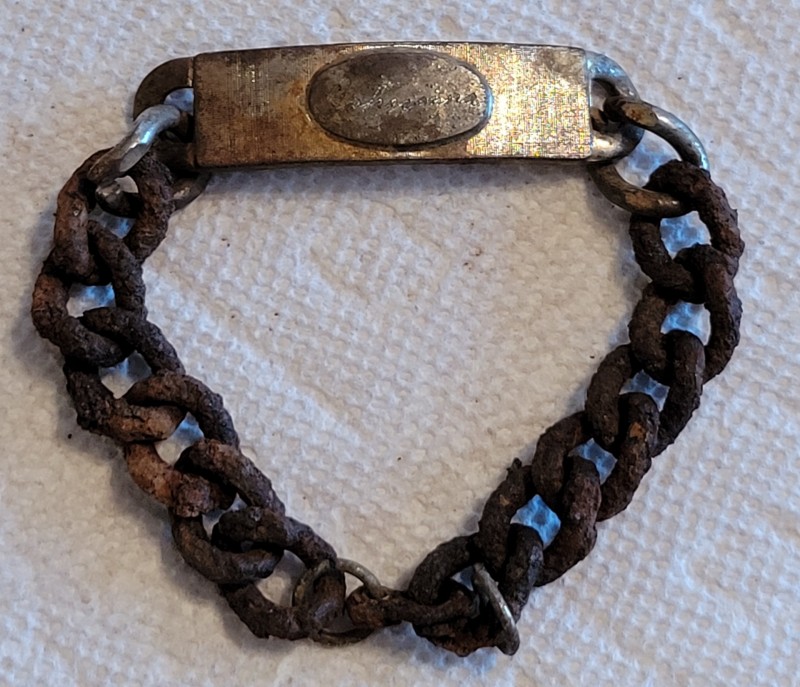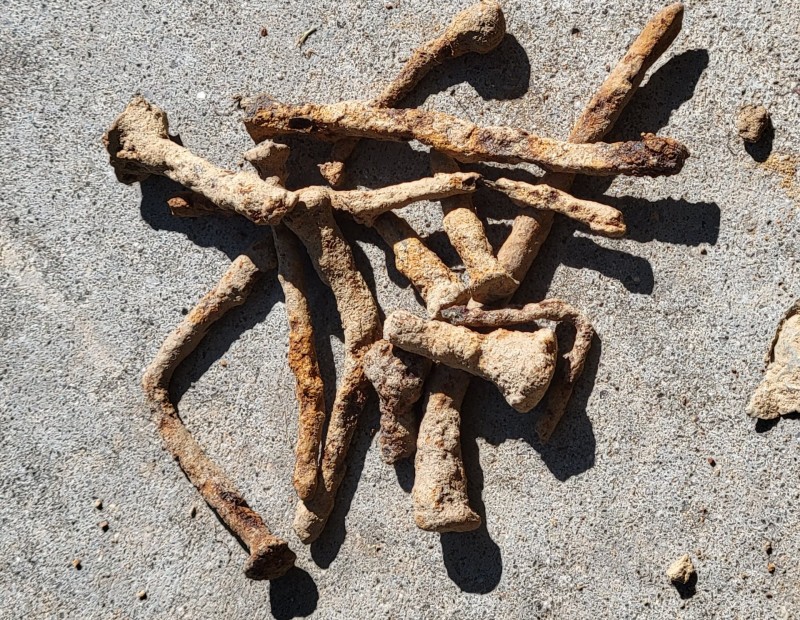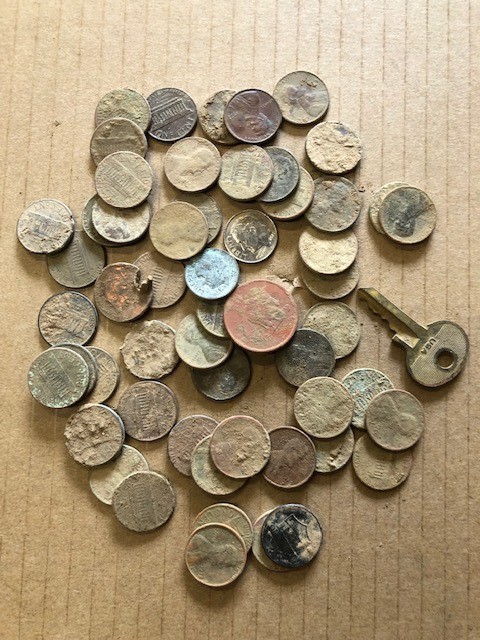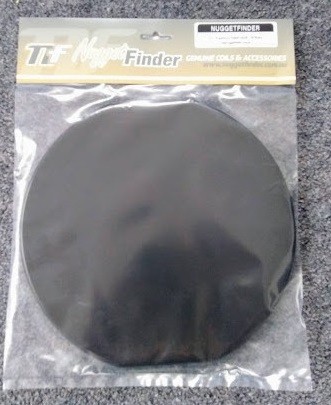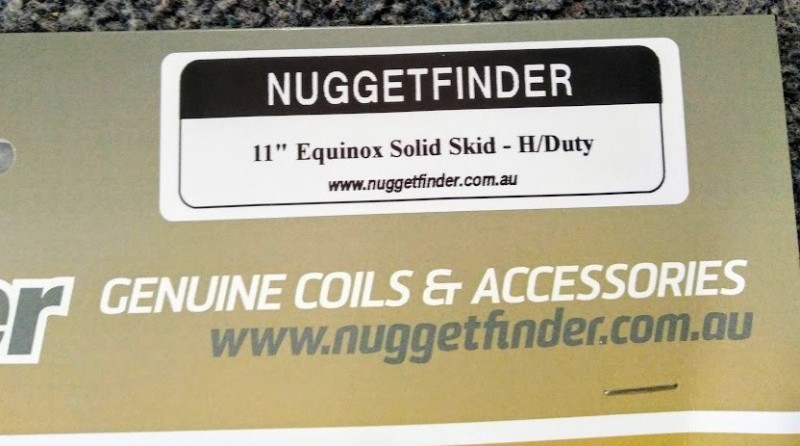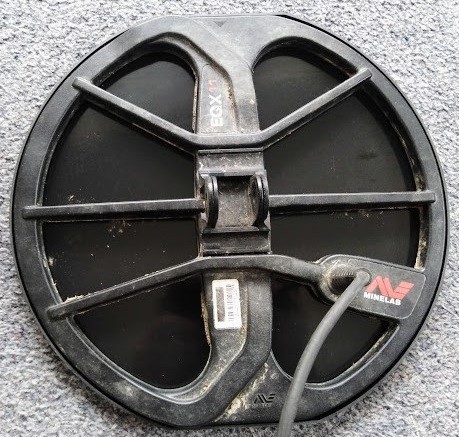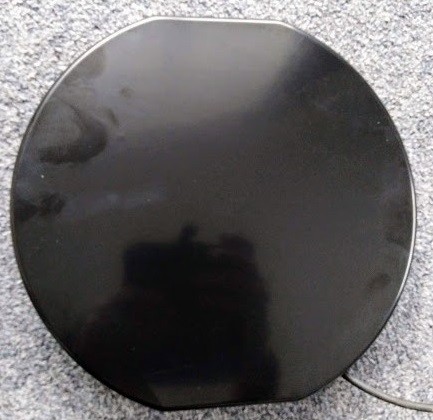Search the Community
Showing results for tags 'minelab equinox'.
-
Hello everyone, maybe some information about orientation in minelab equinox 800, I searched a lot, but I can't find such information. I am looking for information on minelab equinox 800 in the ground balance how we can orient ourselves in the numbers for setting the ground in the ground balance, on the equinox 800 the numbers are from - 9 to +100 how to find out how much our land is ore. On some brands of metal detectors soil balance is from 0 to 100 and 100 is the most degraded land ?
-
I did some more testing of the Equinox 600 and the AT Max in my yard, local park and modified Monte's Nail Board. Right now, I'm 98% certain I'm keeping the Equinox 600 and selling the AT Max. Below are my results concerning my series of tests using my modified version of Monte's Nail Board. I'm going to briefly explain my set up, then provide my results. But TL;DR: the Equinox 600 handily beat the AT Max. My Monte's Nail Board is "special" because I have it set up where I will use a clad dime as the "high tone" target and it's on a plastic tube so the metal detector can be tested with the dime on the same plane as the nails, as well as about 2.5 inches below the nail. At the very bottom are some pics of the modified Monte Nail Board set up. Legend: Coin Position 1 (Up) = the dime is in the middle coin position, but the dime is on the same plane as the nails. Coin Position 1 (Down) = the dime is in the middle coin position, but the dime is below the plane (about 2.5 inches) the nails are on. Coin Position 2 (Up) = the dime is in the side coin position, but the dime is on the same the plane nails are on. Coin Position 2 (Down) = the dime is in the side coin position, but the dime is below the plane (about 2.5 inches) the nails are on. 4 = The metal detector gave a tone and/or VDI response that would definitely result in me digging the target. 3 = The metal detector gave a tone and/or VDI response that would likely result in me digging the target. 2 = The metal detector gave a tone and/or VDI response that would likely result in me NOT digging the target. 1 = The metal detector gave a tone and/or VDI response that would definitely result in me NOT digging the target. When tested, the AT Max was set up so I notched out everything below 65 (so I was in Custom mode), Iron Audio off and sensitivtiy at 2 (out of 8). I also ran the test in Zero mode, but the results were worse (1s all around). The AT Max was using the stock coil (8.5 x 11). Coin Position 1 (Up): Sweep 1: 2 Sweep 2: 1 Sweep 3: 1 Sweep 4: 1 Coin Position 1 (Down): Sweep 1: 1 Sweep 2: 1 Sweep 3: 1 Sweep 4: 1 Coin Position 2 (Up): Sweep 1: 1 Sweep 2: 1 Sweep 3: 1 Sweep 4: 1 Coin Position 2 (Down): Sweep 1: 1 Sweep 2: 1 Sweep 3: 1 Sweep 4: 1 When tested, the Equinox 600 was set up in Park 1 where everything was stock, except I adjusted F2 = 0. Sensitivity was at 10 (out of 25). The Equinox 600 was using the stock (11") coil. Coin Position 1 (Up): Sweep 1: 4 Sweep 2: 1 Sweep 3: 3 Sweep 4: 4 Coin Position 1 (Down): Sweep 1: 4 Sweep 2: 1 Sweep 3: 1 Sweep 4: 1 Coin Position 2 (Up): Sweep 1: 4 Sweep 2: 2 Sweep 3: 2 Sweep 4: 2 Coin Position 2 (Down): Sweep 1: 4 Sweep 2: 1 Sweep 3: 1 Sweep 4: 1 I also tested the Vanquish 340 (and the Fisher F2, but that scored 1s all around). The 340 was in Coin mode with sensitivity at 1 (out of 4). I was also using the V8 coil with it. Coin Position 1 (Up): Sweep 1: 4 Sweep 2: 3 Sweep 3: 3 Sweep 4: 3 Coin Position 1 (Down): Sweep 1: 1 Sweep 2: 1 Sweep 3: 1 Sweep 4: 1 Coin Position 2 (Up): Sweep 1: 1 Sweep 2: 1 Sweep 3: 2 Sweep 4: 1 Coin Position 2 (Down): Sweep 1: 1 Sweep 2: 1 Sweep 3: 1 Sweep 4: 1
-
These tips are based on my personal use of the Minelab Equinox 800 at a few locations in Nevada and California. That means you have to take this with a grain of salt for other locations as far as exact settings but the basic process is the same. I will probably update this in the future as I learn more, including hopefully any observations and tips people may provide on this thread. The Gold Mode is only available on the Equinox 800 and features a VCO boosted audio that is quite different than the other Equinox modes. It is very powerful, especially in Multi frequency, and will detect very tiny pieces of gold. The downside is that in highly mineralized ground you will encounter hot rocks and even the ground itself that wants to react and create signals. The basic secret of nugget detecting with a VLF detector is in tuning the detector for the best performance possible, while accepting that air test type results are not possible in bad ground. A balance must be obtained between sheer power (sensitivity) and the false signals generated in difficult ground. The key default settings for Gold Mode 1 are: Frequency: Multi Ground Balance: Tracking Sensitivity: 20 Recovery Speed: 6 Iron Bias: 6 Accept/Reject: -9 through 0 rejected, 1 through 40 accepted When I hit new ground when nugget detecting I want my detector to be running with manual adjustments. Initially knowing how the ground responds is very important and I want to make any settings that affect anything myself. Therefore, the first thing I do is turn off the ground tracking and use the Auto (pump coil over ground) method of ground balancing instead. Ground tracking can also track out faint nugget signals, so my preference is to run with it off if possible. Frankly, I have not experimented with Iron Bias much. In theory at least reducing this setting will reduce the possibility of tiny gold being misidentified as ferrous. Since I am mistrustful of filters I have been running the Iron Bias at 0. Starting out however people may want to leave it alone since adjusting too many things at once may not be productive for beginners. Recovery Speed is highly misunderstood. People latch onto one out of context statement "lower recovery speed equals more depth" and too many people therefore are immediately going to lower settings. Higher recovery speeds allow the detector to better separate trash targets from good and minimises any masking effects. "Masking" is where bad targets overwhelm and hide good targets. Mineralized "hot rocks" are really nothing more than a large target that can mask (hide) nuggets not just under but next to them. Reducing the recovery speed will often add no depth due to ground conditions, and mask nuggets next to hot rocks. Higher recovery speeds will reveal those nuggets, and so you are often getting more "relative depth" with higher recovery speed settings. I basically stick with the default setting of 6 and will not go lower unless the ground is relatively low mineral and free of hot rocks. Most importantly, in some ground you will find that the coil will tend to give false signals when bumped. This is directly affected by Recovery Speed. Going to lower recovery speeds will generate more false signals due to bumping on rocks. With all that said however, reducing the Recovery Speed can add extra sensitivity to very deep or very small targets. A setting of 4 is easily manageable in low mineral ground and can work for the Equinox in higher mineral ground with a skilled operator. It is possible to go even lower though the detector will typically become less stable at the slower recovery speed settings. Sensitivity is one of those “set it as high as you can without making the detector too unstable” type settings. My settings normally range from 18 to 25 but could go lower in bad ground. Now, the extremely important Accept/Reject settings. Weak gold signals in highly mineralized ground will definitely run into the ferrous range. Starting out, I am going to toggle the Horseshoe button to remove all rejected settings so that the detector reacts to everything. My starting point for Gold Mode 1: Frequency: Multi Ground Balance: Auto (pump method) Sensitivity: 20 Recovery Speed: 6 Iron Bias: 0 Accept/Reject: -9 through 40 accepted The first thing I want to do is see how the ground responds with these settings. Find a place hopefully free of trash, and run the coil over the ground and observe what happens. In most gold locations you should see lots of target responses at -9 and -8 plus possibly -7. These are ground responses and are giving you direct feedback on your settings. The first thing I want to try and do is reduce those ground responses as much as possible by employing a mix of ground balance, sensitivity, and recovery speed. Simply ground balancing should cause those signals to alleviate somewhat. You will want to note hot rock readings especially. The ground will balance out (ground noise reduce) at one ground balance setting, but it may make some hot rocks worse. Sometimes you can manually tweak the ground balance to also reduce the hot rock response while not really making the ground itself worse by trying intermediate settings. You can only do this when not in tracking since tracking decides for you where the settings will be. I always will stay in manual until forced to use tracking for this reason alone. Reducing sensitivity is also a good thing to do in many cases, yet people are very resistant to doing so for fear of losing depth. The thing is, unless you can get the detector to settle down and run relatively smoothly you will struggle with hot rocks and false signals. Reducing sensitivity will reduce hot rock signals faster than it will reduce metal signals in most cases, so back it down as needed to get stable performance. If the ground is mild enough you should be able to find settings that reduce or eliminate the readings in the -9, -8, and -7 ground range, plus hopefully alleviating any hot rocks that are present. However, in very bad ground you may still have a lot of signals in that region. If so, try a couple things. First, go ahead and try out the tracking. Tracking has an advantage in that it will typically tune out a hot rock in a single swing or two, while being extremely resistant to tuning out metal objects. If you can get smoother performance over the ground than with any reasonable manual settings, it may be the way to go. In the worst ground and hot rocks the magic ability to switch frequencies can be a serious aid. I have found that Multi is very powerful... more powerful than any single frequency. That does mean that by simply going to 20 khz a lot of ground and hot rocks that are noisy in Multi settle down and become manageable. One of these options may allow you to go detecting without rejecting any target id numbers. That would be ideal. However, do not be surprised if residual signals remain in the -9, -8, and -7 region. If they are still too prevalent, then hit the Horseshoe button again to engage the Accept/Reject function, but go in and open up everything except the offending signals. That for me commonly means blocking -9, -8, and -7 but accepting -6 and higher. Or maybe you need to block -6 also. You have to listen to what the detector is telling you and adjust accordingly. If you do end up blocking out some low negative numbers you may find you can also bump the sensitivity back up a point or two as long as everything stays quiet. Again, the goal is to try and shut down ground and hot rock responses to the greatest degree possible while retaining as much detecting power as possible. It's a balancing act. Tiny nuggets will often read as solid hits at target id 1 and 2. The larger the gold, the higher the target id reading. Gold can appear anywhere on the meter all the way up into the 30's if the nugget is large enough. I have not had it happen yet but be very suspicious of 0 and -1 readings as also being possible gold readings.* This is just an example of where I end up at on my ground a lot so far: Gold Mode 1 Frequency: Multi Ground Balance: Auto (Ground pump method) Sensitivity: 18 - 23 Recovery Speed: 4 - 6 Iron Bias: 0 Accept/Reject: -9 through -7 rejected, -6 through 40 accepted Note: the following works as well on both Equinox 600 and Equinox 800. Since Gold Mode lacks target tones, going to Park 2 and using the solutions above plus the additional possibility of tones is another alternative. Instead of using Gold Mode and blocking the lowest target id numbers they can be left open to signal as ferrous or mixed ferrous targets. And you now have 5, 10, and 15 kHz options that Gold Mode lacks. Park 2 set up properly is quite close to Gold Mode performance and a perfectly acceptable nugget detecting alternative, and actually superior for some situations. You may also use Field 2 as a starting point. Be very careful however because the default rejection pattern for Field 2 rejects target id 1 and 2. This will reject most small gold nugget readings and reduce signal strength on larger gold by blocking part of the signal. I therefore recommend Park 2 to avoid this possibly fatal error. For Park Mode 2: Frequency: Multi Ground Balance: Auto (Ground pump method with manual tweaking) Sensitivity: 16 – 25 Recovery Speed 800: 4 - 6 (default is 6) Recovery Speed 600: 2 - 3 (default is 3) Iron Bias: 0 Accept/Reject: Everything accepted, rely on tones (alternative reject -9, -8, and -7 if too much ground feedback) In closing, I want to say that gold nugget detecting demands far more expertise from the operator than most detecting. People who rely on canned settings provided by others will never be expert unless they really understand what the settings are doing. It is imperative that you be able to observe ground responses as I have noted above, and know how to best alleviate them while losing as little depth on gold as possible. It is a very fine balancing point done correctly and can only be done properly by a person who genuinely understands how the detector operates. The only way I know to become proficient is lots of experimenting in the field with different settings on test targets and hot rocks. The settings above are less important than the methodology, and if you want to truly become a proficient nugget hunter you do need to work at it. I hope that helps somebody out - best of luck to you! Updated Nugget Detecting Tips 9/2018 *This article recommends keeping as many negative numbers set to accept as is possible. It has been confirmed that as I suspected that nuggets range well into the negative numbers. First gold nuggets found with Minelab Equinox from Jonathan Porter report...
-
We've had nice weather here in the Midwest the past week or so and after getting out Wednesday I was doubling up on Thursday afternoon. The curve ball mentioned in the thread title was breaking an ML Equinox 11" coil ear when loading the car, which I described in the appropriate thread. Fortunately I have both the 6" and 12"x15" coils (but not the Coiltek 5"x10" yet). I'm detecting a park with not too much iron or aluminum trash so I figured the large coil would be OK, as long as it didn't mess up my elbow swinging a heavy coil through the deep grass. (Wet and warm early autumn hasn't met with the Parks Department's mowing budget....) First target was showing low 20's (typically an aluminum screw cap) and out popped a clad dime. Hmmm, that should have been 25-26. Was the larger coil giving different dTID's. Going back over the hole answered the question -- 20-21 and out comes a Zincoln. I don't think the two coins were touching but they were super close to each other leading to the anomalous dTID initially. 15 minutes into the hunt I get a Wheatie, not too deep (3-4 inches). That's the age coin I'm looking for. Maybe an hour later after the typical occasional can slaw, a couple rusty nails, and a few modern coins I got a nice sounding but inconsistent tone & dTID. From one direction as I swept close to the target location left-right I was getting hi-lo-hi-lo... tones (14-19 = pulltab zone is set for a medium tone whereas 20 and up are high tones; the tone was alternating between these two). This is not typical of coins in my experience by any means so I'm thinking a flattened, non-symmetric aluminum screw cap. I don't remember the exact strength indicator value but I'm sure it was at least 5, maybe mostly 6, possibly occassional 7. I also don't remember the dTID at a 90 degree compass change angle of approach but I'm sure it was at least high 20's (large, elongated can slaw?). The tone volume told me it wasn't a near-surface coin-sized object. Definitely good enough to dig. Weak(er) signal strength means take a good sized plug so about 7"-8" diameter and 5" deep was my start. The Garrett Carrot (set at max gain = 3) said I was in the right spot and switching to the fine tuning White's TRX told me I had a localized (coin-like size) target which was between 1" and 2" deeper than the current hole depth. I carefully cut about a tennis ball sized chunk of dirt centered on the TRX signal's centroid and upon removal was told the target was in that glob. Breaking it up with my fingers I saw a coin but it wasn't immediately obvious if modern clad or silver. Again, careful not to scratch I picked off a clod of dirt and saw the familiar (from dimes I've found 🙂 Barber Head. See middle coin in photo: Only my 3rd silver quarter ever and 1st Barber Quarter, others being Washingtons. (Guess I'm going to skip the Standing Liberties. ) Even better than being 19th Century date was the -S mintmark. Left coin in the photo is actually a 1919-S which I found the previous day probably less than 10 m away from where I found the quarter. So -S mint oldies in consecutive days, and neither is particularly common although neither is a semi-key. On the right is a 1941 Merc which I found last week, so three consecutive hunts with non-penny old coins. That's very good for me in my current public sites. Why the anomalous dTID from one direction? I wonder if the coin was oriented on-edge. So what's the big 'A'? Some of you recognize this as the Atlanta Braves initial. For those who don't follow our North American professional baseball, they just won the annual championship (not so modestly called 'World Series') for their first time in a quarter century. They were underdogs vs. at least their last two playoff opponents. But there is a detecting connection. I sometimes hunt in rural areas during Autumn and that is prime (gun) hunting season. I have other bright (orange) garb but I wanted a baseball cap (easier to accomodate headphones) and I saw this hat at a flea market for $5 a few years back. I wonder if I can sell it now for a profit. Anyone interested?
-
Hey everyone, I've been swinging the equinox since I got it in February, moved up from simplex, and been loving it since, despite a rocky start I've found a small bit of gold, and been killing it on silver. I bought a couple of Clive James clinick's books. Skill building, and gold jewelry hunters handbook. I found both to be helpful. I am running into a bit of trouble understanding target tracing/pinpointing. When I first get a target I can tell if it's huge by the sound, but for regular targets, in pinpoint, I'm getting better at telling the size, but still having trouble. Everything still sounds largeish. Clive talks about tracing the outline of a target in pinpoint to ",see the shape" but I'm stuck there. Everything is just blob shaped, with no real definition. I've noticed on some YouTube videos when they are showing the response to a target, the sound is super quiet. I'm wondering if I'm just running the volume too high (21 on the machine, and a couple down from Max on headphones. I'm using the equinox ones). Or too high sensitivity (average of 18 in my parks) Could someone make a YouTube demo on target tracing?
-
Whites MXT All detection combat versus Minelab Equinox 800 on gold programs ... on the Top Digin test field. Who will win? Will it be a 20-year-old Single-Frequency Sophisticated Detector Whites MXT ... or a Modern Multifrequency Detector Equinox 800? .. The terrain of the test is mineralized and the target detectors are masked with iron .. so the task for these detectors will not be easy ... This test is from my colleagues from Top Digin ... both colleagues Jack and Mike have already had something to do with various detectors, among others, in recent years with Equinox, both of whom I consider to be an excellent detector. You can see for yourself which detector can play a better result ....
-
-
We do like Steve, wife sold her nox 800 just before 3 years and ordered her new one. Showed up today and she was all excited ,put it together, charged up ready to try it out. Well the on/off switch wouldn't work! She was a little disappointed but Minelab said send it in, so off it went !
-
Wife and I both use the 800s and hunt side by side. Was at a rodeo arena and I was getting a very poor signal in tone and numbers but was an iffy high squeek and vdi of 27, 28,29.30. So was telling me possible quarter? Dug down around 15 inches , nothing on pin pointer still. Called wife over to have her check it: Nothing, only iron grunts and vdi of 6,9,3 so on. I went over both detectors to affirm they were set up identical! Park 1, sen 21, speed and iron the same. I changed hers to park 2 and upped the sen to 24 and such to no avail , no matter what, hers couldnt see what ended up being a quarter on edge in the side of my hole about 9 inches down. So it has me convinced that one detector may be more sensitive then the next. Has any one compared two equinox 800s on same targets in the ground ? It doesnt really seem to matter caz she beats me on best finds 8 out of 10 times anyways!
-
I bought these headphones and used them in the ocean last week in the Kauai (up to my neck).The dealer is always busy or on a trip so I thought I'd throw this out there to get some feedback. I had a few instances where the audio cut out completely and I jiggled the cord and it came back. My question is, should the end of the headphone cord have an o-ring like a lot of my scuba equipment does? The EQ800 still seems to work fine so I don't believe any water made it's way inside detector. As to my success ..well let's just say I understand why my dealer goes to Cancun for his jewelry hunts and not where I went where the waves are 3,4,5 feet. I quickly looked for beaches with "breakwaters" that you can safely take children to and I did find lots of coins and 1 silver diamond ring..but man, it was still 'surgey' as heck and not easy to lift one foot up to push scoop into sand while keeping your balance! Anyone have any experience in using the EQ in the ocean? I saw online sand scoops with a "cross" handle (like on a small shovel) where when you scoop you can keep the scoop from twisting sideways...thoughts..usage?The scoop handle would have to be a "breakdown" type to be able to pack for air travel. The scoop I took has a straight shaft that easily turns sideways when scooping.
-
I have been suffering from plantar fasciitis and torn ligaments in my left ankle for about 6 months. The plantar fasciitis has cleared up on its own. The torn ligaments have not yet healed so hunting with a dig it all approach just hasn't been possible since last March. Walking is iffy enough, but lots of getting up and down is very painful. So, I have had to limit myself to shorter outings and lots of cherry picking. I tried an experiment using the F2 iron bias feature during my recovery for some of the parks I hunt that have high iron mineralization. I used Park 1 and Park 2 with F2=4 and just concentrated on obvious no brainer signals. Deep or shallow didn't concern me, just the quality of the response. I hunted with both zero discrimination and with half of the iron range rejected = -9 to -6. My target recovery of deeper low to mid conductive targets pretty much ceased to exist during this time.......deeper silver jewelry and coins along with any depth of higher conductive US modern coins (wheats, copper memorials, clad dimes and quarters, Kennedy halves and modern "gold" President and Sacajawea dollars) was seemingly not effected. Today, I hunted an exact area that I had hunted a month ago with those settings except that I hunted with F2=0 and dug every target that sounded good. I had already cleared out the higher conductive clad so none was found. I tested every low to mid conductor target from +6 to +22 (the gold and small silver jewelry range) that sounded decent using F2=0, and then switched to F2=4 and F2=9 before I dug the targets. All of these targets which were clear and obvious targets using F2=0 were beyond the range of my handheld FTP Tek Point pinpointer that was set on maximum which usually reaches coin sized targets down to 3.5 to 4" in this park. All of the targets in the photo except for the first two modern pull-tabs (bright silver and red surface finds) were recovered at deeper than 4". Some were as much as 8". They all sounded very good with repeatable signals in all four swing directions (+), and had dig me gold range numbers using F2=0. Using F2=4, all of these targets were iffy at best and the deeper ones sounded mostly like iron. Using F2=9, all of these targets were mostly iron with just a hint of low to mid conductor tones and corresponding numbers. It is no wonder that I previously walked right over these targets since I had limited myself to digging only excellent sounding targets due to my injury. Even if I wasn't injured, I am not sure that I would have dug these using F2=4. No way using F2=9. Two of the nickels are fairly old for the Denver area, a 1949 and a 1960. Both were 8" deep and sounded very good using F2=0. The big stainless steel ring (+8) and the Avon gold plated junker (+14) were 6" deep and sounded fantastic with F2=0. The two .925 small silver jewelry items (+22) sounded great using F2=0 and were 5" deep. So, in higher iron mineralization, are my results an outlier or is using F2 iron bias above zero just too agressive on low and mid conductor non-ferrous targets? Comments, disagreements and Pooh Poohing are welcome.
-
I hunt really trashy parks and hardly ever go after nickels because my time is limited. I'm going to notch in 12-13 on my next hunt due to amount of wheats and silver I've been taking out of 2 places I've hit this past month. Have you found the Nox the hit nickels in this range at depth, I'm talking 7-9" depth, that's where most of the keepers are being found, thanks.
-
Official Minelab instructional video
-
I was wondering what a replacement of the control pod will cost if out of warranty. Does anyone know the cost of a 600 and 800 control pod if you buy them outright from Minelab?
-
Blank Sheet for Recording Custom Settings for my Nox 800 OK, Ok; back in the day of my XLT Spectrum... ...I had a notebook full of custom settings for my records. Now I can convert (scan and save as) to Word Document or Adobe Acrobat to save and carry with my Smart Phone. Problem is, I cannot seem to find a sheet to copy online. I know I could create my own, but... HELP! Started a list to see if I have the settings in the right order. Does anyone have suggestions and/or corrections for the following list. OK; what order for the Equinox Settings Sheet??? 1. What preset program to start with 2. How many tones; 2, 5, 50 3. Ground balance setting and/or auto balance 4. Setup accept/reject notches for your hunt site or hunt style 5. Select Volume for each tone region 6. Select Tone Pitch for each tone region 7. Set tone break, preferably at 1 8. Set recovery speed for conditions or accept default 9. Run Noise Cancel 10. etc. etc. etc. what am I forgetting
-
Hello all, I am new to the forum but I have been reading for a couple years. I live in the heart of central Illinois in some of the HOTTEST soils on earth... We have that glacial till high mineral black sandy,salty,clay,rock,coal,coke stuff that makes corn and beans grow to yields not seen anyplace else. I have over 120 hours on the nox 800 and I understand what the settings do ect. My ground balance numbers are in the 74-90 range with an occasional 50ish. I cant find anything. I had an old BH3300 and I found 182 silvers last year in just my small town. I have maprika so you can overlay a map from whenever over current maps and know where things were. I have made all my finds by research. I never knew my soil was hot. I got about 6 inches on the 3300 and come to find out thats about as deep as anything ends up due to rock ans clayish layer 6-8 inch down. If someone knows anything about my soil I need some recommendations. I am not going to say where I live but one other area in central Il has the exact same dirt. Paxton Illinois in ford county Illinois. The best results I get is in beach 1 recovery 8 iron bias 2 and sens 16. If I use anything else I get perfect repeatable tones on something that makes me dig and dig and its never there. I shook a china mans hand one day i dug so deep!! Whats wierd about the soil is I can make a test garden and hit a penny at 14 inches in park 1 and 10 inches in beach 1...
-
I was wondering what you folks think about the coil ear breakage issue that continues to plague Minelab with coils for the Equinox. I have several friends who have had the ears break on the 15" coil and have seen other users suffer this same problem with the stock coil. This past Sunday I had the opportunity to use the 15" coil at the beach and I loved it. However, the coil ear problem has me a bit leery. Even the aftermarket coil stiffeners don't seem to help and for all I know they may actually contribute to the problem. From what I have seen breakage occurs in two spots: 1. The top of the "loop" where the coil nut and bolt are attached and 2. At the base. I also wonder if since these ears are thin that coil bolt over or under-tightening could be the culprit, It seems that there is a defect in this coil ear design that Minelab should be addressing either by an exchange program with a redesigned coil or an extension of the warranty on the coil. Thoughts? Bill (S. CA)
-
Hello all, I'm new to digging and have bought an Equinox 800. On my first dig I dug up enough iron to start my own scrap metal yard. On my second dig i altered my FE number and I dug less rubbish. the more experienced members seem to dig less but find more. There must be an indication as to whether the VDI is potentially worth digging or not. I've read the 64 page user manual and been out with a club a couple of times but have some basic questions that the manual does not seem to help with: 1) Can I set the accept/reject so that I never dig lead or ring pulls ? 2) Would the same target eg a silver sixpence give different VDI numbers at different depths ? 3) Will lead always be the same VDI number or does it depend on size and depth ? I know its not an exact science and experience will help but I need to know what I'm learning.
-
Who among you has experienced a coil ear breakage? Among those who have experienced a coil ear breakage, how many use or have used the coil/machine under water? I ask because I’m wondering if the added pressure of resistance under the water is the primary cause of breakage (aside from obvious design flaw). I use mine under water occasionally but haven’t had a breakage yet, and trying to avoid one until I buy a coil ear stiffener. Being aware of this issue I try not to over tighten too.
-
Well, after over 3 yrs my 11" coil broke an ear. Here are pics of my attempt to make it stronger than new.🙂 Put the fiber glass on with super glue then a layer of epoxy over that. I'm not sure it needed the epoxy but it smoothed it out. Little black paint coming.
-

Nail Board Test Apex Vs Equinox
Jeff McClendon posted a topic in Metal Detector Advice & Comparisons
First. The title of this topic has been changed to APEX vs Equinox. That was not my title and I don’t agree with it. I did not start this topic as one versus the other. These two detectors are not equal in technology or price. I just wanted to show what they can do on the same test. If you want to make it a versus comparison that is your choice. I performed these Monte's (outstanding member of this forum) nail board tests using the Garrett ACE APEX with the stock Viper coil and the Equinox 800 using its 6" coil so at least coil widths are similar. I do not have any other APEX coils to test presently. If the Mercury dime is heard during both left and right swings that equals 2 points. If it is only heard in one swing direction that equals 1 point. If it is not heard, that equals 0 points. A perfect score is 16 points. I did not make these videos in order to make one detector look bad and another look good, etc. I think they both performed at about their respective price points. By the way, my Deus in Pitch mode with the 9" HF coil consistently scores 15 on this test with a USA Indian Head penny, Mercury dime and Half dime. The APEX and Equinox scores in these videos are also consistent with my off camera testing on those coins. I made them to show first of all that relic hunting/coin shooting in iron trash should not be done in any of the APEX preset modes other than Zero. However, in my soil conditions, using Zero adds too much ground noise to the audio even with a good ground balance. I use a Custom mode very similar to Monte's suggestions with discrimination set from +20 to +99. This allows silver and copper coins to be detected audibly. At least with the circa late 1800s square nails I am using, the iron plus Mercury dime VDIs sometimes end up in the low to mid 30s. Garrett's preset Relic mode starts at +35 and Jewelry starts at +40. Using either mode may unintentionally silence non-ferrous targets in thick iron trash. Also, the Viper coil has to be exquisitely swung at just the right coil height during this video in order to get the best results. That coil height is different for each of the four swing directions. I struggled to get it right while holding my camera.........but the results are consistent with off camera testing for my/Monte's Custom mode and the default Jewelry mode. There is a bit of EMI and the APEX does have a bit of iron falsing on some of the nail heads. This APEX has the latest 1.28.1 software update installed. I also made them to dispel opinions or rumors that the Equinox 600 and 800 are not very good in iron trash. Personally, they do well for me........as well as a Deus, of course not. Better than any simultaneous multi frequency detector on the market today........if set up optimally, yes. I used Park 2 with a similar amount of the iron range accepted compared to the APEX Custom mode and Field 2 with the entire iron range rejected similar to the APEX Jewelry mode. The Equinox down averaged the Mercury dime also due to all of the iron targets. However, those VDIs stayed well within the mid conductor non-ferrous area. The Equinox also had some iron falsing on some of the nail heads. Thanks for watching. Turn up your volume. Sorry about my very poor video skills. Both videos are around 5 minutes each in length.. ACE APEX EQUINOX 800 -
I got out for a while last Thursday morning to the farmhouse. Dug this bracelet, it is iron and brass, maybe some gold plate. It has hand engraving on it, and "Japan" stamped into the back. I estimate it at around the 1970s. I've been a little concerned that using iron balance at F2=3 (max on the 600) might be a bit extreme, so I re-buried the bracelet at about 4" and tried every IB setting. Got some interesting results: Iron/brass/gold plated bracelet 4" deep with 90 degree swing to check FE=0 19/20 no iron tone Fe=1 19/20 short iron tone Fe=2 -1/-2 sometimes 18-20 mostly iron Fe=3 -3 to -5 solid iron tone F2=0. 19/20 no iron tone F2=1 19/20. No iron tone F2=2 19/20 no iron tone F2=3 19/20 iron tone Park 1 5 tones all metal sensitivity 23 Since this object is both iron and brass, I would expect the results I get at FE=1 and F2=3. I was a bit surprised by FE=2 and 3. If I don't use F2=3, I get a lot of this due to false tones: I dug all these at FE=2, after going over an area I feel I have pretty much wiped out. This is all I found there. Interested in input. 🙂
-
This morning I woke up to much less heat and humidity. So not having to much luck at a few sites I decided to have a little fun and decided to just dig The dreaded Zincoln's. I was inspired by a fellow forum member who absolutely LOVES the Zincolns, I won't mention his name (GB amateur) Like I said I won't mention his name (GB amateur). I know that all of you will say, that is not fun. I look at it this way, It will always be rewarding. It will always give you a signal and it will hone your pinpointing and digging skills. (also give you a bad back). So off I went to start the Zincoln project. After a 4 hour run I was rewarded with 53 zincolns, 2 dimes (had to dig for my sanity) and 1 Quarter (also for my mental health). Not sure if I dug any key dates or mints (mostly were corroded). I hope our fellow forum member, Who I still won't mention (GB amateur) will now have a renewed sense of how rewarding it is digging these once pristine and beloved coins, But sometime cleaning out a park of these magical coins makes you feel bad for fellow detectors, Who will never have the chance to find such a wonderful coin. So in parting, don't be greedy leave at least a few so others can bask and revel in one of the greatest coins ever made. HAPPY HUNTING MY FRIENDS!!!!!
-
Why My Nox Doesn't Identify The Target In The Plug?
F4ttk4tt posted a topic in Minelab Equinox Forum
I am needing an explanation why it is that my Nox doesn't hit on the target after I have popped the plug while all of my previous and less sophisticated detectors can and do without fault. Before asking the answer is yes. I have done all of the necessary start up procedures AND ran this through ALL levels of sensitivity and subsequent adjustments and parameters. I look forward to any viable answer that can be got or being directed to wherever this lies in a previous forum. Thx -
I used my Equinox a lot in longer grass, and also in very rocky areas. The spoked design coils are never my preference but that's all the Equinox has. I couldn't believe it when the Coiltek 10x5" came out as an open design and I asked if they intended to make a solid coil cover for it, they told me no they don't. It would be very funny if Nugget Finder started making solid skid plates for the Coiltek Nox coils, In fact I hope they do. I noticed they have them for the Equinox 11" coil, so I just had to have one. I hope they continue this trend and make them for 6" coil too. Seems well built, fits well... is solid, what more could I ask for? Now I just hope they make more sizes for the other coils, especially the Coiltek 10x5" and ML 6".
- 16 replies
-
- coils
- nuggetfinder
-
(and 1 more)
Tagged with:


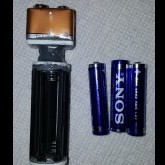
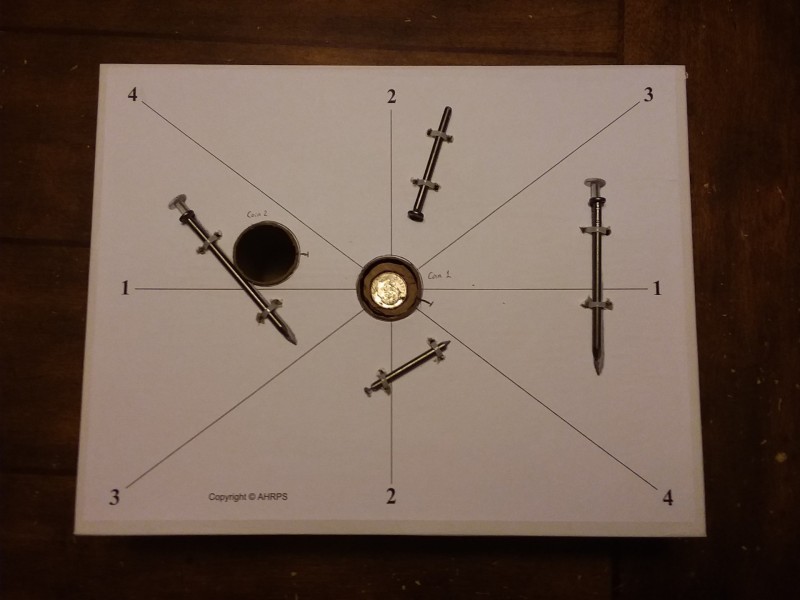
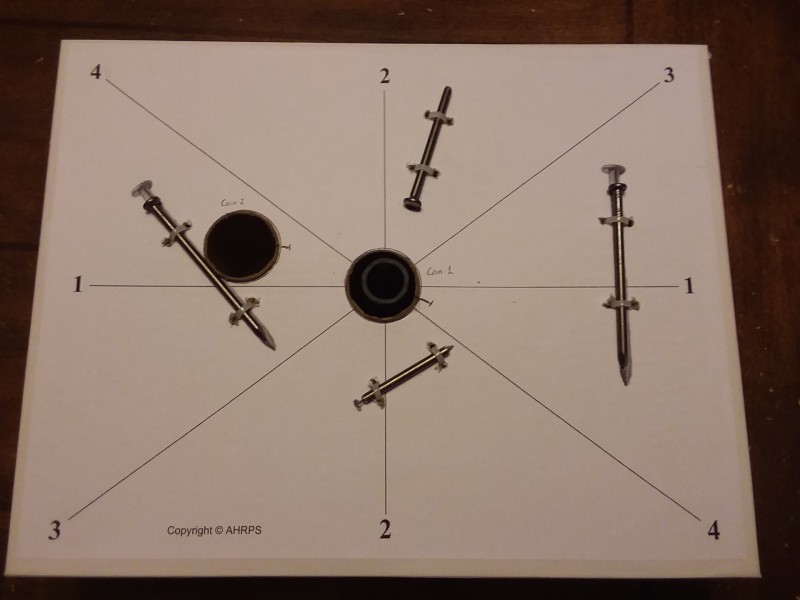
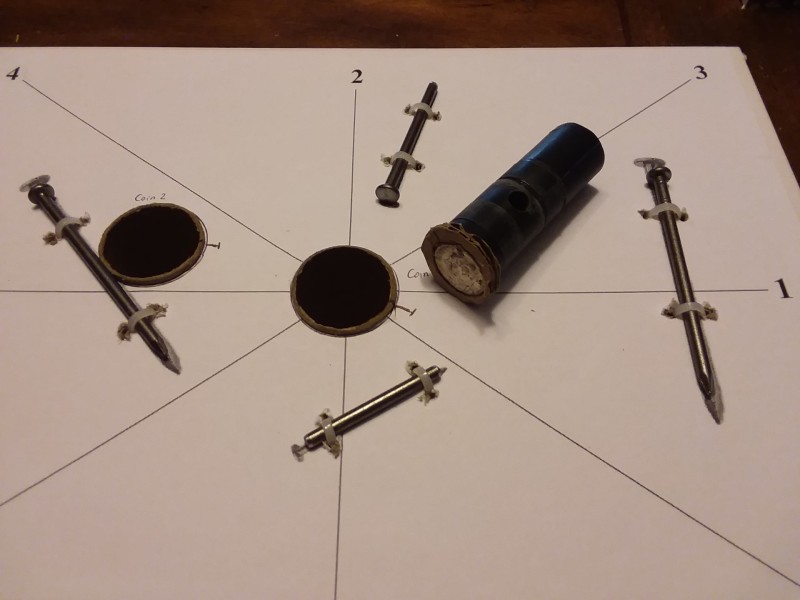
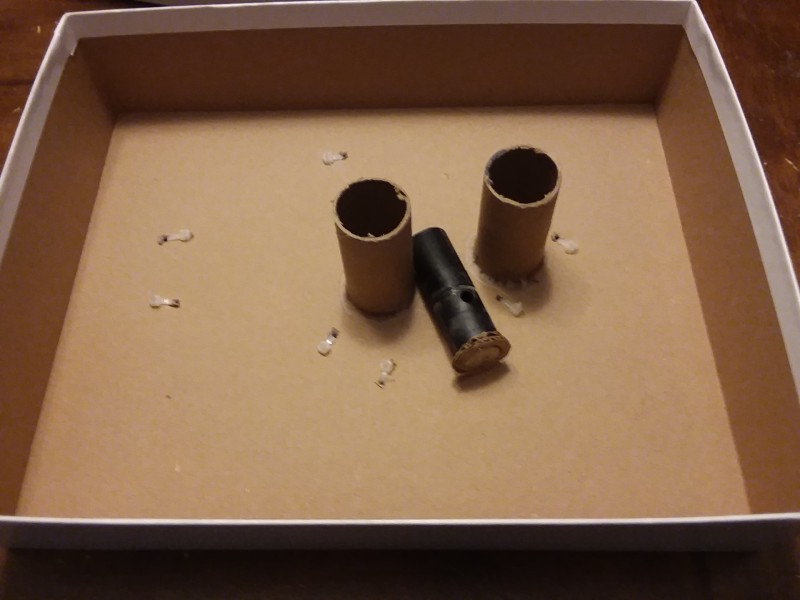
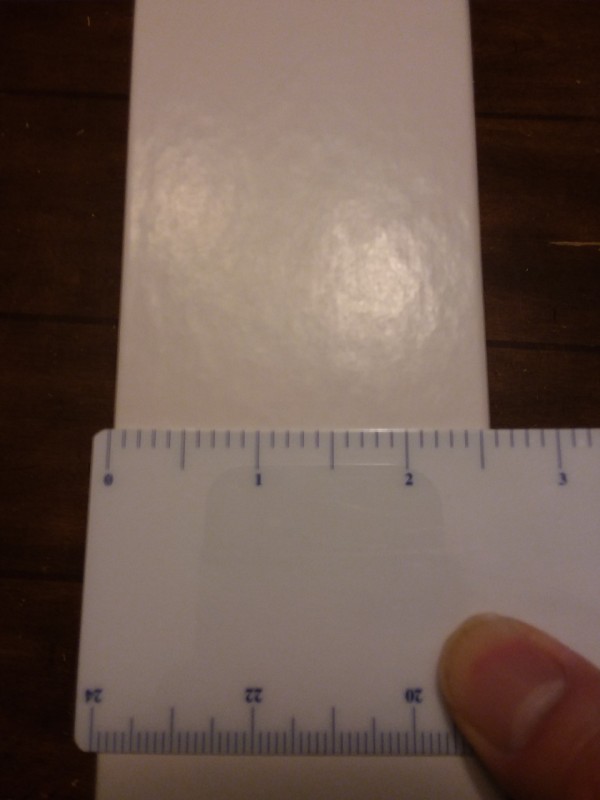

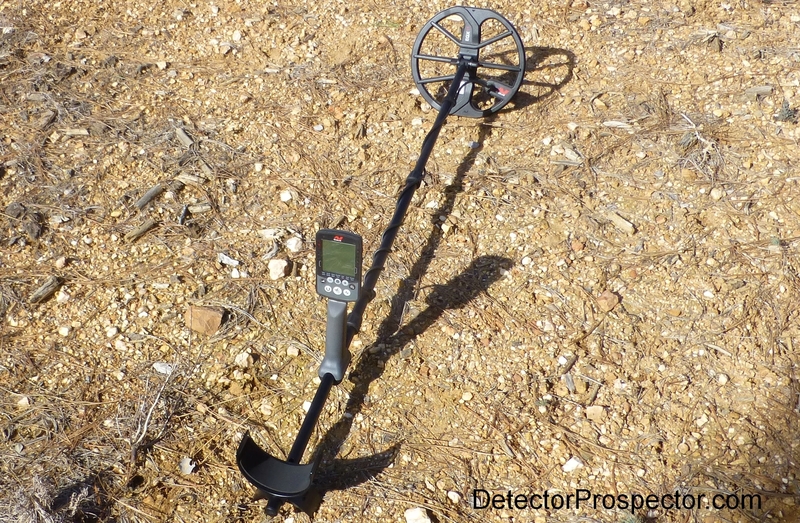


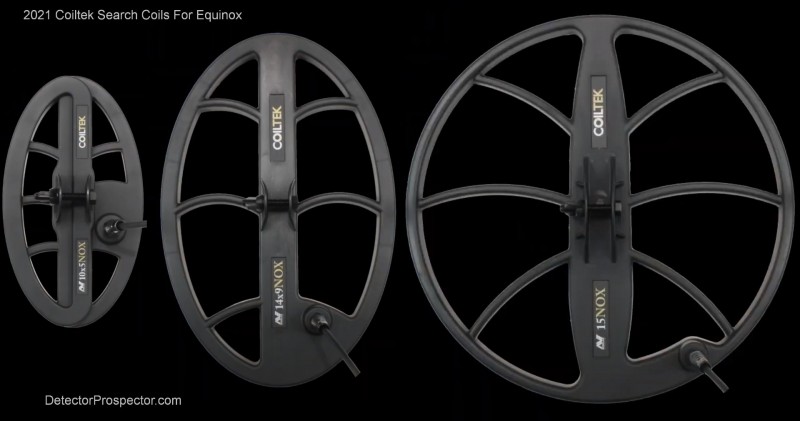
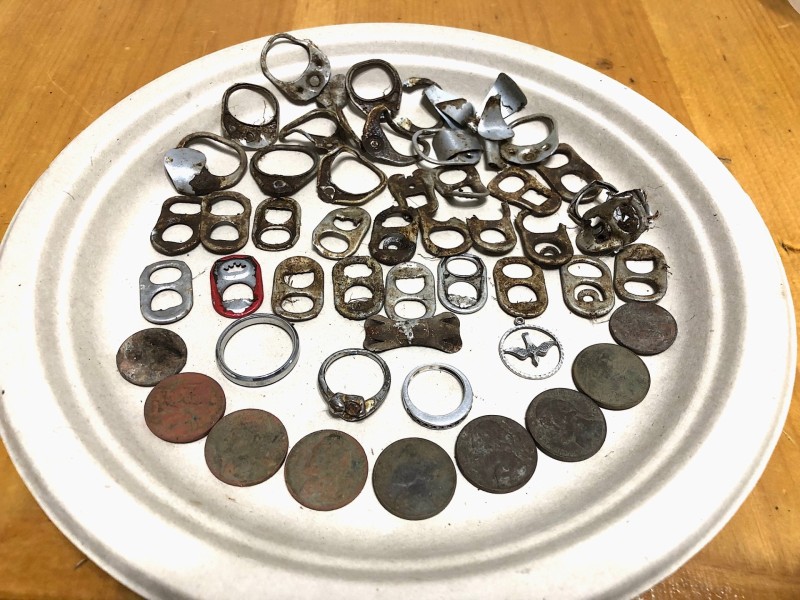
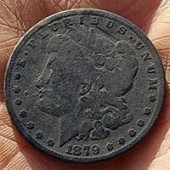

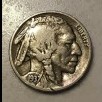
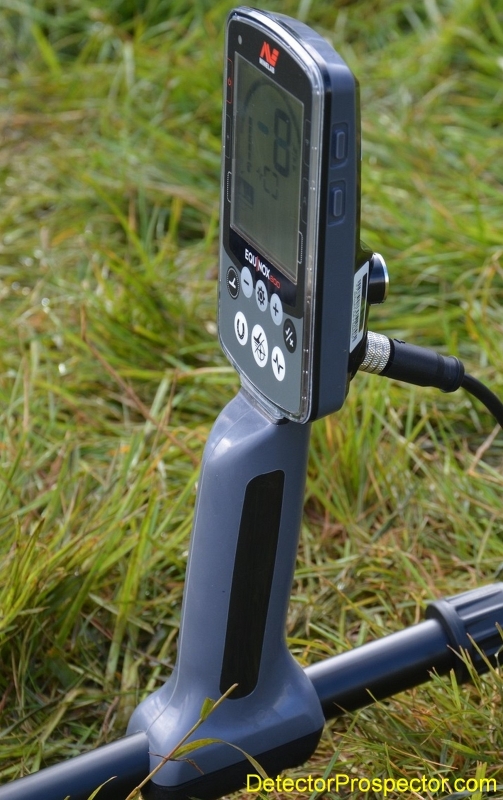
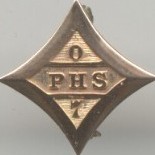

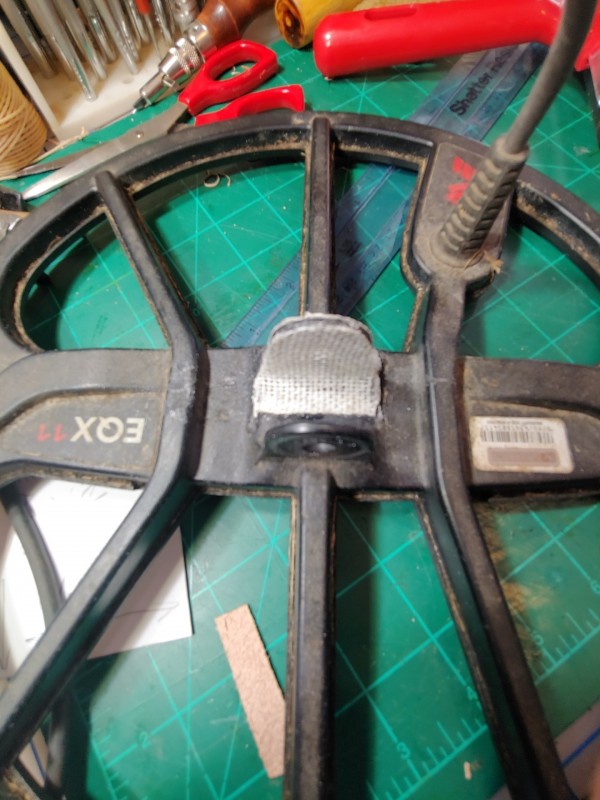
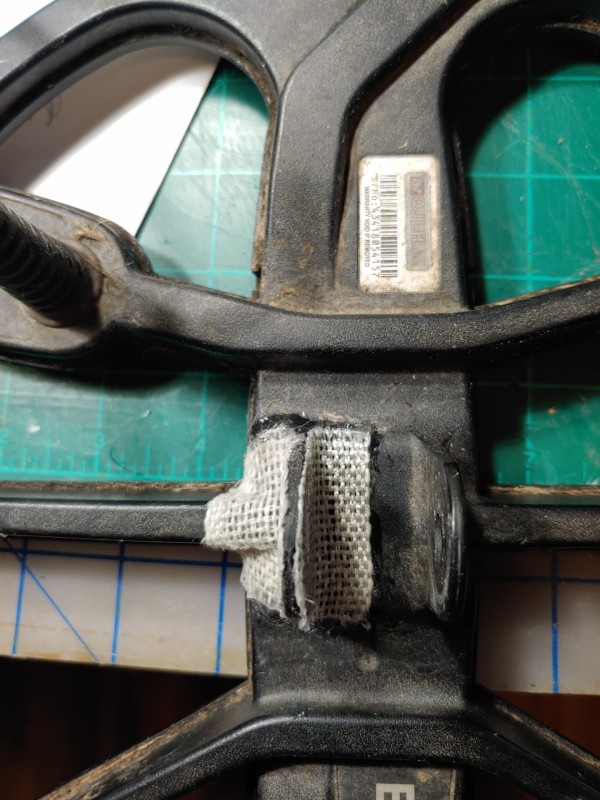
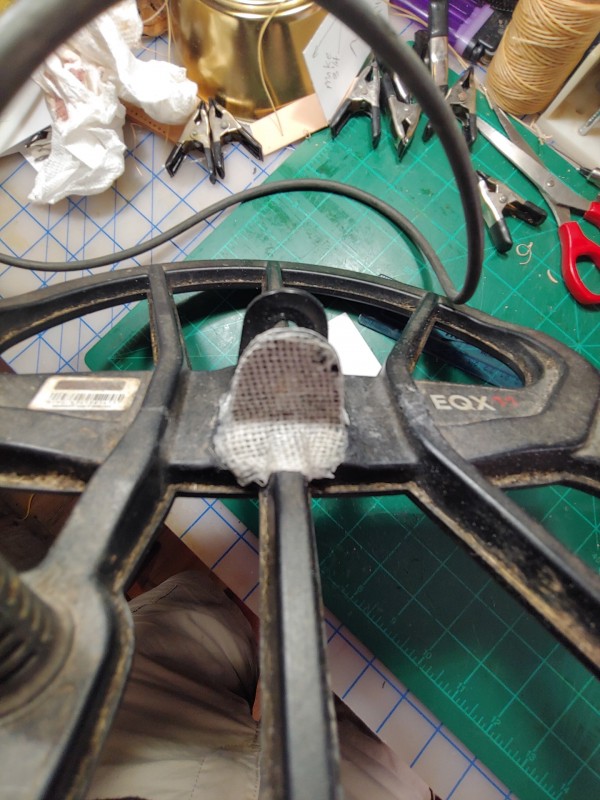
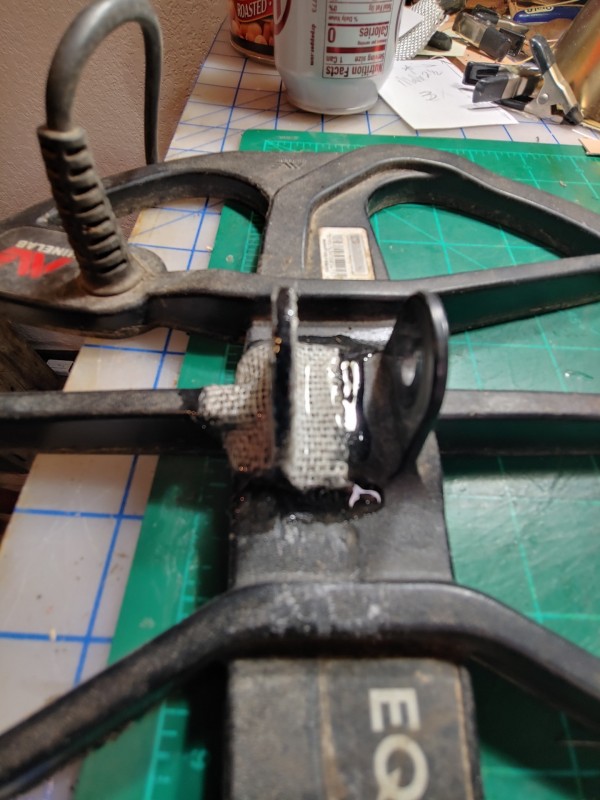
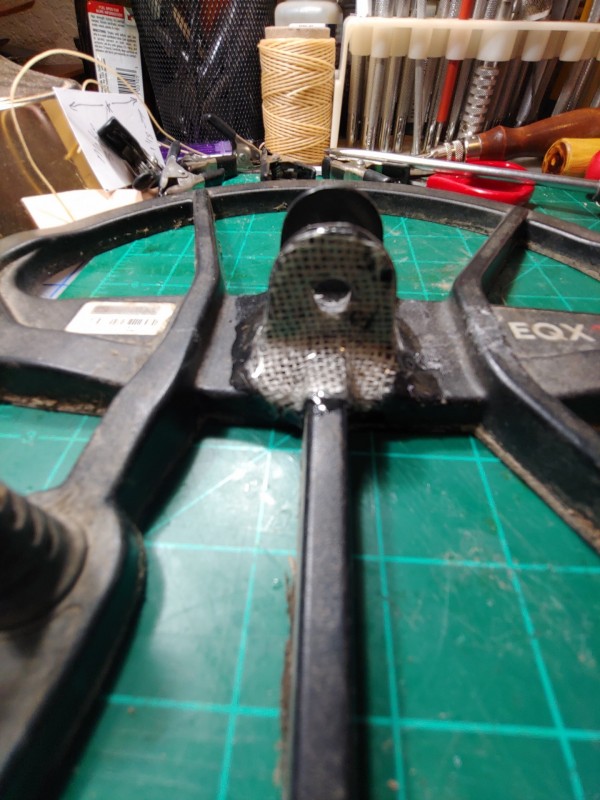
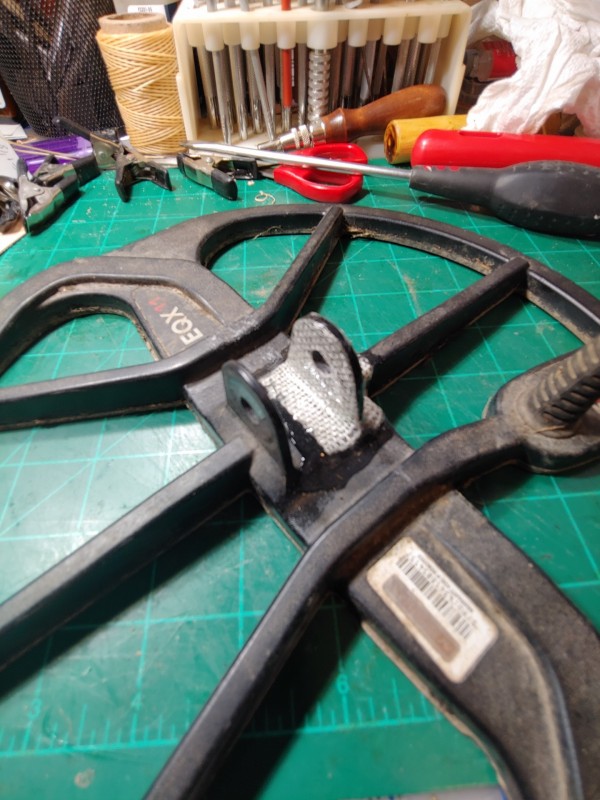
.thumb.jpg.8761b3d9b3da119b9e6d1912f67275ad.jpg)
